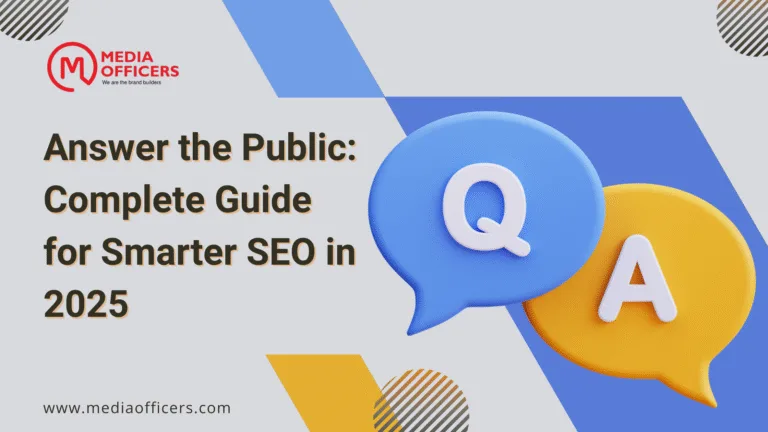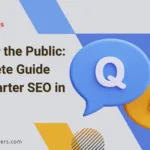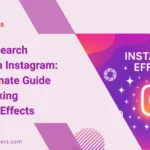|
Getting your Trinity Audio player ready... |
The digital landscape is undergoing seismic shifts, and SEO in 2025 is no exception. By 2025, the strategies that once dominated search rankings will be unrecognizable, replaced by AI-driven algorithms, hyper-personalized user experiences, and a renewed emphasis on brand authority. Staying ahead in this dynamic environment demands adaptability, foresight, and a willingness to embrace innovation. This blog explores the key trends shaping SEO in 2025, focusing on AI integration, user intent, and content quality—cornerstones for thriving in the new era of search.
As Google’s algorithms evolve to prioritize experience, expertise, and authenticity, businesses must pivot from outdated tactics like keyword stuffing and backlink farming. The rise of AI-generated content, voice search dominance, and zero-click SERPs (Search Engine Results Pages) means adaptation isn’t optional—it’s existential. Let’s dive into the strategies that will define success in 2025.
1. The Role of AI in Shaping SEO
AI-Driven Search Experiences
Google’s Search Generative Experience (SGE) and tools like ChatGPT have revolutionized how users interact with search engines. Instead of sifting through links, users receive instant, conversational answers powered by generative AI. For instance, queries like “best budget laptops 2025” now yield AI-generated comparisons, relegating traditional organic results to secondary positions.
The Rise of Zero-Click Searches
With AI Overviews providing immediate answers, “zero-click searches” are surging. A 2024 study by BrightEdge revealed that 65% of searches now end without a click-through, forcing marketers to rethink strategies. To adapt:
- Optimize for SGE: Structure content to answer questions directly (e.g., “How to fix a leaky faucet in 5 steps”).
- Leverage Structured Data: Use schema markup to highlight FAQs, how-tos, and product specs for AI crawlers.
- Target Long-Tail Keywords: Focus on niche queries like “sustainable yoga mats for hardwood floors” to bypass generic AI answers.
AI for Scalable Content Creation
AI tools like Jasper, SurferSEO, and Copy.ai are indispensable for scaling content production. They identify trending topics, generate drafts, and refresh outdated posts. For example, HubSpot uses AI to audit old blogs, updating statistics and adding multimedia to boost engagement. However, human oversight remains critical to ensure originality and brand voice.
Ethical AI: Avoiding the “Content Graveyard”
As AI floods the web with low-quality content, Google’s “Helpful Content Update 2.0” penalizes sites lacking depth. To avoid penalties:
- Add Unique Insights: Conduct original surveys or interviews.
- Humanize AI Output: Inject anecdotes, case studies, and humor.
- Prioritize E-E-A-T: Showcase author credentials and peer-reviewed data.
2. Shifting Focus to User Intent and Experience
Decoding User Behavior
Algorithms now prioritize content that aligns with user intent—whether informational, navigational, or transactional. Tools like MarketMuse and Clearscope analyze search patterns to map intent, ensuring content meets expectations. For example, a query like “best running shoes” should address product comparisons, not general fitness tips.
The Power of Engagement Metrics
Dwell time, scroll depth, and goal completion (e.g., newsletter sign-ups) are key ranking factors. A 2025 Moz study found pages with videos retain users 3x longer than text-only posts. Strategies:
- Interactive Elements: Embed quizzes, calculators, or configurators (e.g., “Find Your Ideal Skincare Routine”).
- Heatmap Optimization: Use Hotjar to identify drop-off points and redesign layouts.
- Mobile-First Design: Ensure fast load times (under 2 seconds) and thumb-friendly navigation.
Voice Search Optimization
Voice-activated devices now account for 30% of searches (Adobe 2025). Optimize for natural language:
- Answer Questions Concisely: Structure content in Q&A format.
- Localize Content: Voice searches are 3x more likely to be local (e.g., “Where’s the nearest vegan café?”).
- Colloquial Phrases: Target phrases like “How do I…” instead of formal terms.
Multilingual SEO
With global internet penetration at 75%, optimizing for non-English queries is critical. Use tools like DeepL or Smartling to:
- Translate content while preserving context.
- Target region-specific keywords (e.g., “zapatillas de running” vs. “running shoes”).
3. Diversification of Traffic Sources
Beyond Organic Search
Relying solely on Google is risky. Diversify with:
- Video SEO: Optimize YouTube/Instagram Reels with keywords, transcripts, and CTAs. For example, Canva’s TikTok tutorials drive 20% of their site traffic.
- Paid Search: Use Google Performance Max for AI-optimized ad campaigns.
- Community Platforms: Reddit’s “Ask Me Anything” threads and Quora spaces drive referral traffic.
The Rise of Niche Platforms
Platforms like Discord, Substack, and TikTok Shop are becoming search engines in their own right. For example, gamers now use Discord to find mods and tutorials, bypassing Google entirely.
Podcast SEO
Optimize podcast episodes for search:
- Include transcripts with timestamped keywords.
- Repurpose clips into YouTube Shorts or LinkedIn posts.
- Use platforms like ListenNotes to track rankings.
4. Prioritizing Brand Authority
Google’s Love for Recognized Brands
Brands with high search volume (e.g., “Nike” vs. “running shoes”) dominate rankings. Build authority via:
- Multi-Channel Presence: Launch podcasts, webinars, or LinkedIn newsletters.
- Native Ads: Sponsor articles on industry platforms like TechCrunch or Forbes.
- Partnerships: Collaborate with influencers for co-branded content.
E-E-A-T Compliance
Google’s emphasis on Experience, Expertise, Authoritativeness, and Trustworthiness requires:
- Showcasing credentials (e.g., “Certified by the American Medical Association”).
- Publishing peer-reviewed studies or whitepapers.
- Highlighting customer testimonials and media mentions.
Thought Leadership
Position executives as industry experts through:
- Guest appearances on podcasts like Marketing School.
- Bylined articles in niche publications.
- Data-driven reports (e.g., “2025 State of AI in Marketing”).
5. Evolving Content Strategies
Bottom-Funnel Keywords for Conversions
Shift focus from broad terms (“digital marketing tips”) to intent-driven phrases (“best SEO agency in NYC”). Tools like SEMrush highlight high-conversion keywords.
Content Refreshing
Update old posts by:
- Adding 2025 data and case studies.
- Repurposing blogs into infographics or podcasts.
- Deleting outdated content (e.g., “SEO trends in 2020”).
Topical Authority
Become a go-to resource in a niche. For example, Backlinko dominates SEO guides through exhaustive, data-driven content.
Interactive Content
Engage users with:
- AR Experiences: Let users visualize products in their space (e.g., IKEA Place).
- Dynamic Tools: ROI calculators, budgeting templates, or habit trackers.
6. Traditional SEO Tactics Still Matter
Local SEO
Optimize Google Business Profiles and collect reviews. 46% of searches are local (BrightLocal 2025).
Technical SEO
- Improve Core Web Vitals (speed, mobile responsiveness).
- Fix crawl errors via Screaming Frog audits.
- Implement hreflang tags for multilingual sites.
Link Building 2.0
Prioritize quality over quantity:
- Earn links from .edu or .gov sites.
- Publish data-driven “skyscraper content” competitors can’t replicate.
7. Preparing for the SEO in 2025: Challenges and Opportunities
Challenges
- AI Content Saturation: Stand out with original research and storytelling.
- Algorithm Volatility: Monitor tools like Google Search Console for updates.
- Privacy Regulations: Adapt to cookie-less tracking with first-party data strategies.
Opportunities
- AI-Powered Personalization: Deliver tailored user experiences via tools like Dynamic Yield.
- Emerging Platforms: Experiment with AR/VR search interfaces (e.g., Apple Vision Pro).
- Sustainability SEO: Rank for terms like “carbon-neutral shipping” as eco-conscious searches grow.
Conclusion
The future of SEO in 2025 is a blend of innovation and tradition. By leveraging AI, prioritizing user intent, and diversifying traffic, businesses can not only survive but thrive. Stay agile, experiment relentlessly, and remember: in 2025, the brands that adapt fastest will own the SERPs.







